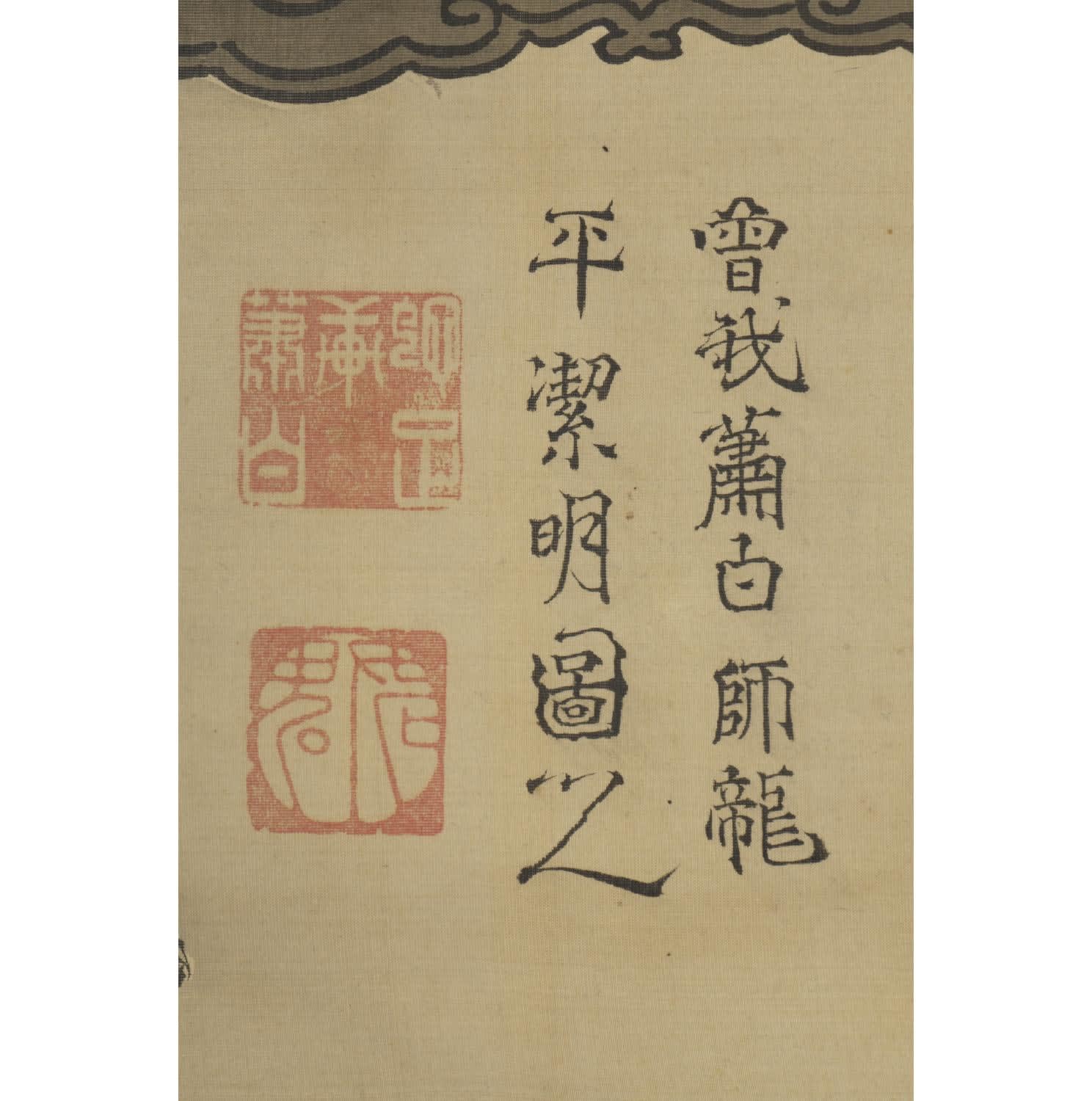Soga Shōhaku (1730−1781)
Eight Immortals of the Wine Cup
Ink on silk, hanging scroll
Double boxed
Seals: Jasokuken Shohaku, Joki
50 x 87 cm
138 x 93 cm (overall)
Double boxed
Seals: Jasokuken Shohaku, Joki
50 x 87 cm
138 x 93 cm (overall)
Further images
Provenance
Collection of Ki no Tobe
Derived from the celebrated poem “Eight Immortals of the Wine Cup” by the Chinese poet Du Fu (712–770), the present work by Soga Shohaku depicts the eight famous scholars who are as well drunkards of Du’s time: Li Bai intoxicated, Zhang Xu wielding a brush, Cui Zongzhi raising a wine cup, and Su Jin drinking in front of the Buddhist painting; in the standing screen on the right, He Zhizhang falling asleep on the horseback while Li Jin, or Prince of Ruyang, looking at a cart carrying the molted rice. These six figures are relatively easy to identify. The one of the remaining two who gulps the wine down from a huge vessel might be Li Shizhi, and the other who makes an eloquent speech to the viewer might be Jiao Sui.
A similar example of both He Zhizhang and Li Jin appearing in the standing screen within the painting can be found in Shohaku’s Eight Immortals of the Wine Cup, a single six-panel folding screen in the exhibition catalog of Mie Prefectural Art Museum, which might predate the present work judging from its unrestrained brushwork recognized as one of the characteristics of Shohaku’s early works. By contrast, the present work is relatively moderate in style, which is considered to be of his later work.
A hanging scroll on the same subject in the Museum of Fine Arts, Boston, bears a resemblance to the present work in composition, except that He Zhizhang and Li Jin appear in the far distance rather than in a standing screen; but in terms of grouping, separating He and Li from the other six is in common among the three. Besides, judging from its restrained brushstrokes, it is fair to date it between the Mie catalog screen and the present work. Along with the style transition, the representations of figures also slightly differ among the three. The dancing figure in the Mie catalog screen, for example, appears in neither the Boston painting nor the present work. Poem-writing Li Bai shown in the Boston painting is not found in the other two. That Zhang Xu uncapped and Cui Zongzhi raised a wine cup depicted in the present work is more consistent with Du Fu’s poem imagery.
Soga Shohaku (painter; 1730−1781)
Also known as Miura Teruo; Terukazu; Terutaka; Shiryu; Sakonjiro; Jasokuken; Kishinsai, Joki; etc.
Kyoto-born mid to late Edo period painter. Learned painting under Takada Keiho, and named himself “Soga Jasoku X” for his admiration for the Muromachi Period ink painting. Distinguished for his radical subject, unconventional composition and dynamic brushstrokes. Close to Ike no Taiga, and left a great many anecdotes due to his eccentric character.
A similar example of both He Zhizhang and Li Jin appearing in the standing screen within the painting can be found in Shohaku’s Eight Immortals of the Wine Cup, a single six-panel folding screen in the exhibition catalog of Mie Prefectural Art Museum, which might predate the present work judging from its unrestrained brushwork recognized as one of the characteristics of Shohaku’s early works. By contrast, the present work is relatively moderate in style, which is considered to be of his later work.
A hanging scroll on the same subject in the Museum of Fine Arts, Boston, bears a resemblance to the present work in composition, except that He Zhizhang and Li Jin appear in the far distance rather than in a standing screen; but in terms of grouping, separating He and Li from the other six is in common among the three. Besides, judging from its restrained brushstrokes, it is fair to date it between the Mie catalog screen and the present work. Along with the style transition, the representations of figures also slightly differ among the three. The dancing figure in the Mie catalog screen, for example, appears in neither the Boston painting nor the present work. Poem-writing Li Bai shown in the Boston painting is not found in the other two. That Zhang Xu uncapped and Cui Zongzhi raised a wine cup depicted in the present work is more consistent with Du Fu’s poem imagery.
Soga Shohaku (painter; 1730−1781)
Also known as Miura Teruo; Terukazu; Terutaka; Shiryu; Sakonjiro; Jasokuken; Kishinsai, Joki; etc.
Kyoto-born mid to late Edo period painter. Learned painting under Takada Keiho, and named himself “Soga Jasoku X” for his admiration for the Muromachi Period ink painting. Distinguished for his radical subject, unconventional composition and dynamic brushstrokes. Close to Ike no Taiga, and left a great many anecdotes due to his eccentric character.









